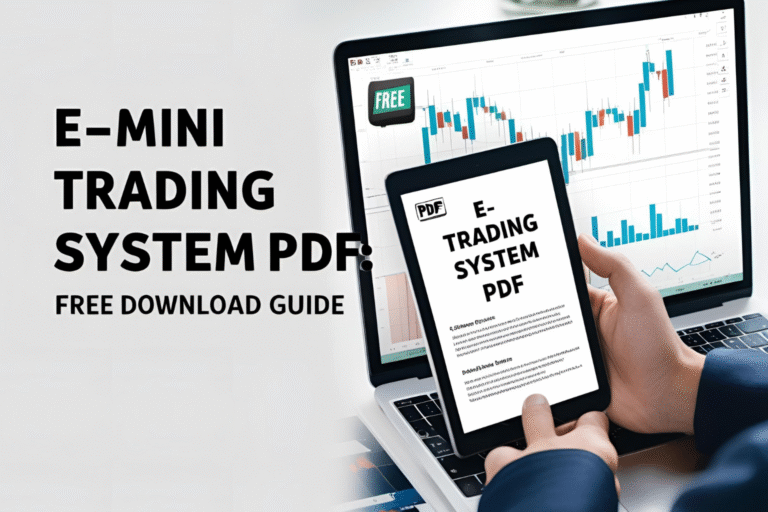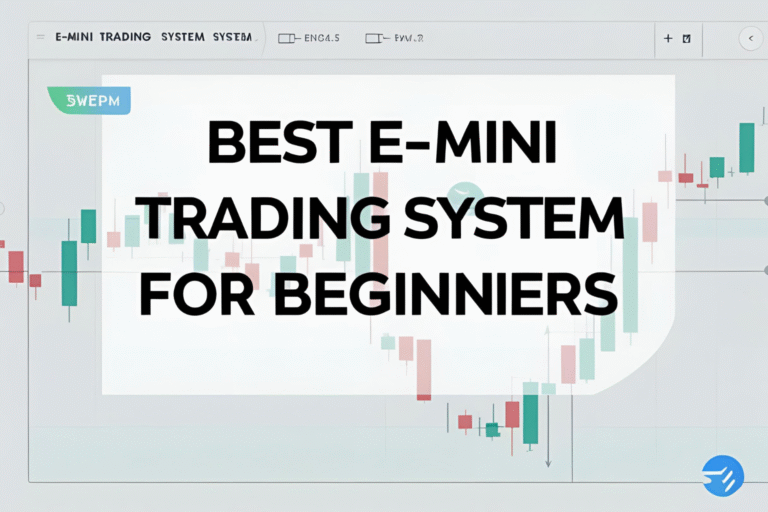What Is the Best E-mini Strategy for Beginners?
Starting your journey in E-mini futures trading can feel overwhelming, especially with so many strategies out there. But as a beginner, your focus should be on simplicity, risk control, and consistency.
In this post, we’ll show you the best E-mini strategy for beginners, explain how it works, and guide you through a step-by-step method you can practice immediately—especially if you’re trading from India.
What Makes a Good Beginner Strategy?
The ideal E-mini strategy for new traders should be:
- Easy to understand and execute
- Based on clear rules and signals
- Suitable for low capital (Micro E-mini)
- Effective during regular market hours
- Supported by basic indicators and price action
With that in mind, let’s explore one of the most recommended starter strategies.
Strategy Overview: VWAP Reversion + Price Action
This strategy combines Volume Weighted Average Price (VWAP) and simple price action signals to catch high-probability intraday trades.
Why VWAP?
- Acts as a dynamic intraday support/resistance level
- Used by institutions and retail traders alike
- Helps identify fair value areas
Tools Required
- Trading platform with live charting (e.g., TradingView, ThinkorSwim, TWS)
- 1-minute to 5-minute chart timeframe
- VWAP indicator
- Candlestick chart with volume enabled
Setup Steps (Intraday)
Step 1: Plot VWAP on the Chart
Most platforms have a built-in VWAP indicator. Use the default settings.
Step 2: Wait for the Price to Deviate from VWAP
Avoid trading right at market open. Wait 30–45 minutes for the market to establish a direction. Look for price to move significantly away from VWAP.
Step 3: Look for Reversal Candlestick Patterns
Once price is extended (either far above or below VWAP), wait for:
- Pin bars (rejection wicks)
- Engulfing candles
- Inside bar breakouts in the opposite direction
Step 4: Confirm with Volume
Make sure there’s increased volume near the reversal point—this indicates institutional interest.
Step 5: Enter Trade
- Long entry: Price bounces upward after rejecting below VWAP
- Short entry: Price reverses downward after rejecting above VWAP
Use limit or market orders depending on the momentum.
Step 6: Set Stop-Loss and Target
- Stop-loss: Place just beyond the candle’s wick or support/resistance
- Target: VWAP level or mid-point of the range
Maintain a 1.5:1 or 2:1 reward-to-risk ratio
Example Trade
Chart Setup:
- MES1! on TradingView
- 5-minute timeframe
- VWAP added
- Price drops 10+ points below VWAP
- Reversal candle forms (bullish engulfing)
- Volume increases
Entry: Buy at 4482
Stop-loss: 4478
Target: 4490
Risk: 4 points = $20 per Micro contract
Reward: 8 points = $40
R:R Ratio: 2:1
Why This Strategy Works for Beginners
- Visually clear setups using VWAP and candles
- Built-in trade discipline via stop-loss and target rules
- Works well with Micro E-mini (MES) for lower risk
- Easy to backtest using replay tools or paper trading
Tips to Improve Success
- Only trade during high-volume hours (8 PM to 12:30 AM IST)
- Use alerts for price reaching overbought or oversold zones
- Avoid trading during major U.S. news events unless experienced
- Keep a trading journal to review setups and outcomes
- Start with one trade per session, focusing on quality over quantity
Platforms You Can Use
| Platform | Use Case |
|---|---|
| TradingView | Charting, VWAP, alerts, paper trading |
| Interactive Brokers TWS | Live execution of ES/MES |
| NinjaTrader | Advanced order flow and automated alerts |
| ThinkorSwim (paper mode) | Chart and strategy testing |
Final Thoughts
The VWAP reversion strategy is one of the simplest and most effective ways for beginners to get started with E-mini futures. It doesn’t rely on complex indicators, and it trains your eye to read price movement relative to fair value.
Focus on perfecting one strategy at a time. Practice with Micro contracts. Be consistent with your routine. And most importantly—manage your risk.
FAQs
Q1. Is this strategy suitable for Micro E-mini (MES)?
Yes. In fact, it’s ideal for MES because you can trade with smaller capital and lower risk.
Q2. Do I need paid data for VWAP?
Some platforms offer delayed VWAP for free. Real-time access is recommended for live trading.
Q3. Can I use this strategy on longer timeframes?
VWAP works best intraday. For swing trading, use moving averages or trend indicators.
Q4. How do I know if the price is extended enough from VWAP?
Look for a gap of at least 1%–1.5% from VWAP or a multi-candle deviation.
Q5. Should I trade every signal?
No. Wait for the best setups with volume confirmation and strong candlestick signals.






